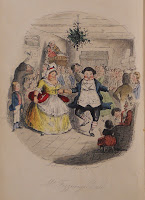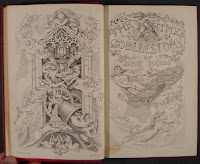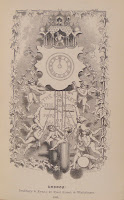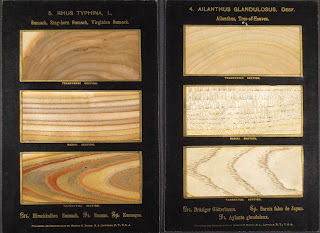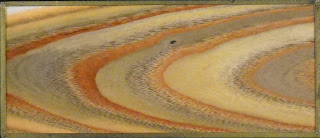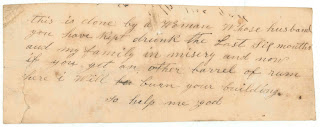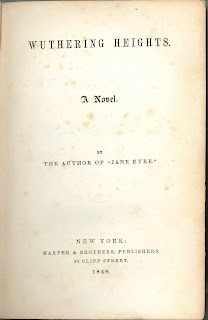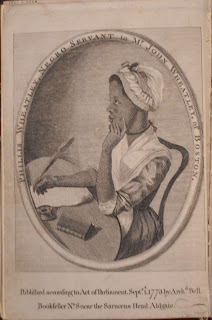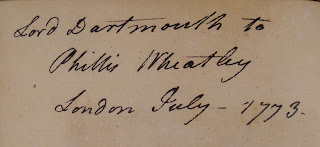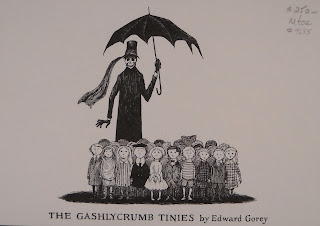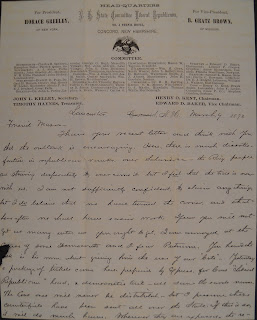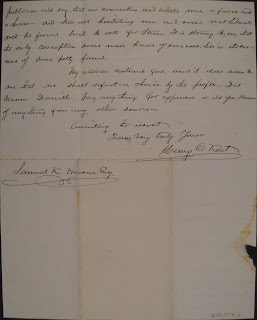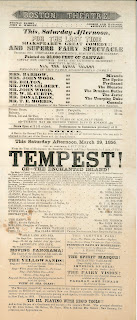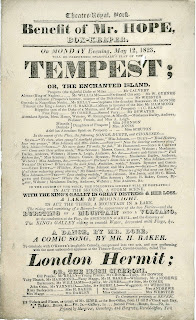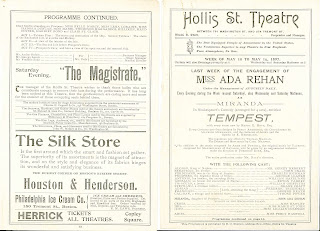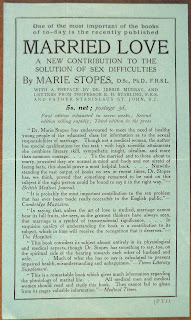
It's no secret among
Little Women fans that Louisa May Alcott based her beloved novel on her life growing up with three sisters. However, fewer people know just how much of the Alcott family's work lies within the walls of Rauner Library. Though we are missing works from Abigail May (the wise mother) and Lizzie (who, like her
Little Women representation Beth, died young), Rauner has works of the other three sisters and their father: controversial transcendentalist Amos Bronson Alcott.
Amos Bronson Alcott's role as "Father" in Louisa May Alcott's fictional books is mostly off-stage, either due to his fighting in the Civil War or extended recovery from injuries. In reality, Bronson was a huge and active part in the Alcott sisters' lives. The Alcott girls were Bronson's four most consistent pupils. Bronson's innovative and controversial method of teaching art, music, nature study and a curriculum of social reform led many students to withdraw and forced the family to move twenty times in thirty years. However, Bronson's views remain documented in
Observations on the Principles and Methods of Infant Instruction. He became well known for his work across New England, forming a Concordian community with transcendentalists such as Ralph Waldo Emerson and Henry David Thoreau. In addition to published works by Bronson, Rauner has one of his private letters of recommendation for a young woman pursuing a musical education, showing just how far-reaching the Alcott family's influence was by the 1890s.
True
Little Women fans will remember Amy March's artistic aspirations (as opposed to Jo/Louisa's literary ones). In light of her fictional counterpart, May Alcott's representation in Rauner is unsurprising: a book of sketches of the Alcott's home in Concord and a copy of
Little Women illustrated by May. Like her fictional counterpart (Amy), May became a moderately successful artist in Europe. However, while Amy returned to America married to Laurie (to the fury of fans who predicted his eventual pairing with Jo), May Alcott married a Swiss violinist fifteen years her junior at age 38, then died in childbirth in Paris.
Anna Bronson Alcott Pratt's representation in Rauner echoes her place in
Little Women even more strongly.
Comic Tragedies, written by "Jo" and "Meg" and acted by the "Little Women" smudges the lines between the fictional characters and the realities of the Alcotts' lives. On the first page are pictures of Louisa and Anna, labeled "Daguerreotypes of Jo and Meg," with a quote below from Mrs. Cheney's Life of Louisa M. Alcott. In the introduction, "Meg" describes the complex interplay of personalities and limited cast that caused the enclosed plays to be structured as they were. In fact, Anna Pratt (Meg's real life persona) published the book in 1893, and likely wrote the introduction herself. As Louisa May Alcott died five years prior to the publication, it is unclear if the melodramatic plays were collected from her
Little Women material, or from a memory of her and Anna's childhood. Indeed as founding members of the Concord Dramatic Union, Louisa and Anna's love for the stage was greater than, or equal to, that of the March sisters.
Rauner has – of course – a number of writings by Louisa May Alcott, including numerous copies of
Little Women, but also lesser-known works, like Louisa's
Hospital Sketches and
A Free Bed. Come peruse a copy of
Little Women, then read more from the family that inspired the novel!
Ask for
Mss 872554 for Bronson's Letter;
1926 Collection A39 for
Little Women (Illustrated by May Alcott);
Rare PS1019.A2 C65 for
Concord Sketches: Consisting Of Twelve Photographs From Original Drawings; and
Rare PS1017.C6 1893 for
Comic Tragedies, written by "Jo" and "Meg" and acted by the "Little Women."
Posted for Kate Taylor '13
 In 1937, Dartmouth was a major college football powerhouse and was invited to play Cal in the Rose Bowl on January 1st--and Dartmouth turned it down. It is hard to imagine both sides of that sentence: Dartmouth invited to the Rose Bowl? A major college football program turning down "the granddaddy of them all"? Presumably the payout wasn't quite the equivalent of the $22.3 million that Wisconsin and Stanford will reportedly each collect for participating this year.
In 1937, Dartmouth was a major college football powerhouse and was invited to play Cal in the Rose Bowl on January 1st--and Dartmouth turned it down. It is hard to imagine both sides of that sentence: Dartmouth invited to the Rose Bowl? A major college football program turning down "the granddaddy of them all"? Presumably the payout wasn't quite the equivalent of the $22.3 million that Wisconsin and Stanford will reportedly each collect for participating this year. Dartmouth went undefeated in 1937 with six wins and two ties. According to the 1938 Aegis, "pre-season predictions of the gridsters went no further than the term 'dark-horse,'" but the team made up for scant experience with speed and strength.
Dartmouth went undefeated in 1937 with six wins and two ties. According to the 1938 Aegis, "pre-season predictions of the gridsters went no further than the term 'dark-horse,'" but the team made up for scant experience with speed and strength.
